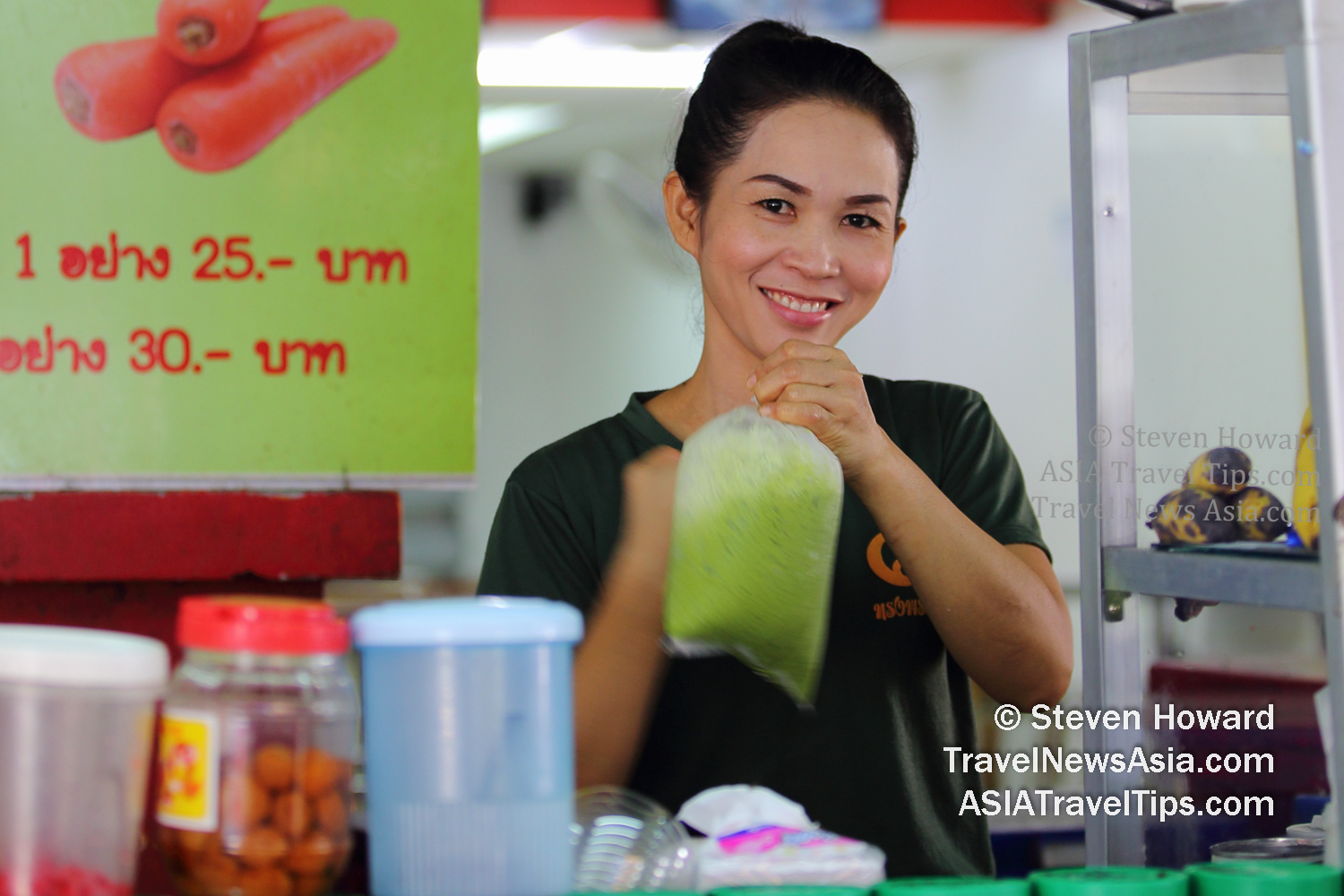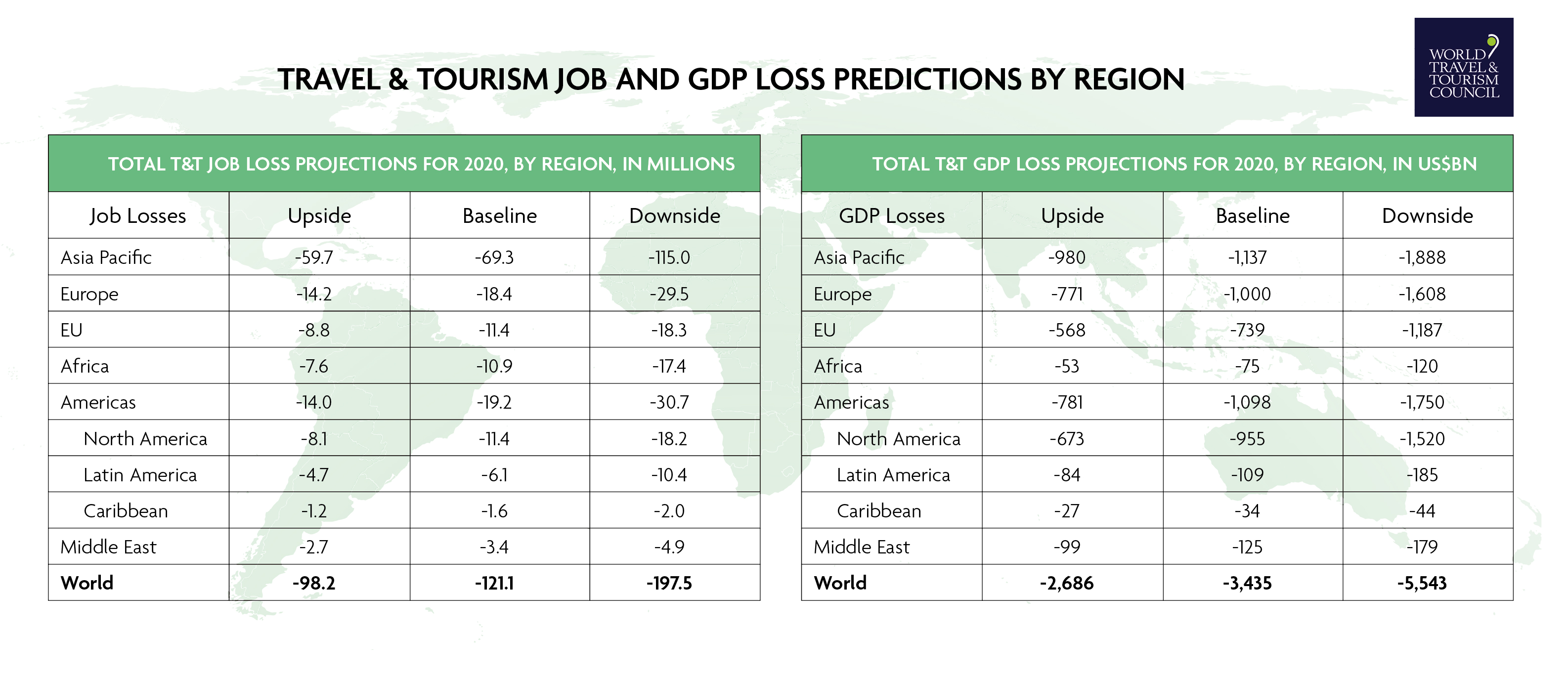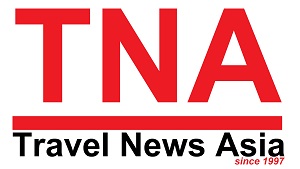|
According to new research from the World Travel &
Tourism Council (WTTC), more than 197 million jobs could be lost
in the global travel and tourism sector if barriers to global
travel, such as blanket anti-travel advisories and quarantine
measures remain in place.
The figure comes from WTTC economic modelling,
which looks at the impact faced by the travel and tourism sector amid local and global travel restrictions as a result of
COVID19.
In the worst-case scenario, where restrictions
were lifted after the summer, the impact would be more
significant, putting a total of 197.5 million jobs at risk. This
represents a 96% rise from the most recent 100.8
million jobs WTTC had previously estimated to be under threat from
the coronavirus pandemic.
The research shows that if these
travel restrictions were removed sooner, it could save 99.3m jobs.
The impact of prolonged travel
restrictions could also wipe out $5,543 billion in the sector�s
contribution to global GDP, equating to a 62% percent drop
compared with 2019.

Meanwhile, in the worst-case scenario,
global international arrivals will suffer a sharp decline of 73%
and 64% for domestic arrivals.
Gloria Guevara, WTTC
President & CEO, said, �We are deeply saddened by the loss of so
many lives and the devastating impact on families around the world
because of the COVID19 pandemic. This terrible virus has
also had a crushing global socio-economic impact, which is
threatening the jobs of millions of people who very livelihoods
depend upon a thriving travel and tourism sector for their survival. Unfortunately, our new modelling reveals the depth of the
long-term impact facing the global travel and tourism industry if
travel restrictions continue for an extended period of time. Under our worst-case scenario, prolonged travel restrictions
could put more than 197 million jobs under threat and cause a loss
of more than $5.5 trillion to global travel and tourism GDP. The sector�s recovery will be delayed by heavy-handed
restrictions just as it emerges from one of the most punishing
periods in its history � in addition to the airlines, the entire
travel ecosystem will suffer including millions of SME�s. Hotels, destinations, travel agents and others will all be
devastated by the economic domino effect of prolonged restrictions
on movement, plunging millions of travel businesses and their
employees into financial ruin.�
The WTTC says it carried out the extensive
research this week and its expert analysis came up with three
possible outcomes for the sector:
Worst-case scenario:
Current restrictions starting to ease from September for
short-haul and regional travel, from October for mid-haul and from
November for long-haul.
In this scenario, 197.5 million
jobs could be lost in the global travel and tourism sector, with a
loss of $5,543 billion in global GPD. Meanwhile, global visitor
numbers would drop by 73% for international arrivals.
Baseline scenario: Current restrictions starting to ease from June
for regional travel, July for short-haul or regional travel; from
August for mid-haul, and from September for long-haul.
In
this scenario, a total of 121.1 million jobs could be lost in the
global travel and tourism sector, with a loss of $3,435 billion in
global GDP. Meanwhile, global visitor numbers would drop by 53%
for international arrivals and by 34% for domestic arrivals.
Best-case scenario: Current measures starting to ease from
June for short-haul and regional travel; from July for mid-haul
and from August for long-haul.
In this scenario, a total of
98.2 million jobs could be lost in the travel and tourism sector,
half the number in the worst-case scenario, with a loss of $2,686
billion in global GDP. Meanwhile, global visitor numbers would
drop by 41% for international arrivals and by 26% for domestic
arrivals.
While the best-case scenario would undoubtedly
still result in a devastating blow for travel and tourism, this
outcome avoids unnecessary additional harm to the sector as a
result of prolonged travel restrictions and protects almost 100
million jobs around the world that could otherwise be lost.

The WTTC says that the best-case scenario can
still be achieved if governments around the globe follow
its recommended four-point plan.
Firstly, the immediate
removal and replacement of any quarantine measures, with �air
corridors� to countries with similar circumstances to stimulate
the travel and tourism sector and the global economy, as well as the
removal of travel advisories and bans on non-essential
international travel, which prevent insurance protection cover for
travellers.
Secondly, the adoption of global health and safety
protocols to provide assurance to travellers that enhanced health and
hygiene measures are in place and that it is safe to travel again.
Thirdly, the implementation of a rapid test and trace
strategy to help contain the spread of the virus, while still
allowing people to travel responsibly at home and abroad.
And finally, greater, and sustained collaboration between the
public and private sectors to ensure a coordinated global approach
to the crisis.
�The health and safety of
both travellers and those working within the sector are paramount.
That�s why we have recommend the opening of �travel corridors�
between countries which have controlled the spread of the virus
and provided immediate support for the entire travel and tourism
ecosystem. This will be vital to kick-start the economic recovery
and rebuild the livelihoods of millions of people,� said Guevara.
According to WTTC�s 2020 Economic Impact Report,
during 2019, travel and tourism supported one in 10 jobs (330 million total),
making a 10.3% contribution to global GDP and generating one in
four of all new jobs.
See latest
Travel News,
Video
Interviews,
Podcasts
and other
news regarding:
COVID19,
WTTC,
Tourism.
|
Headlines: |
|
|
